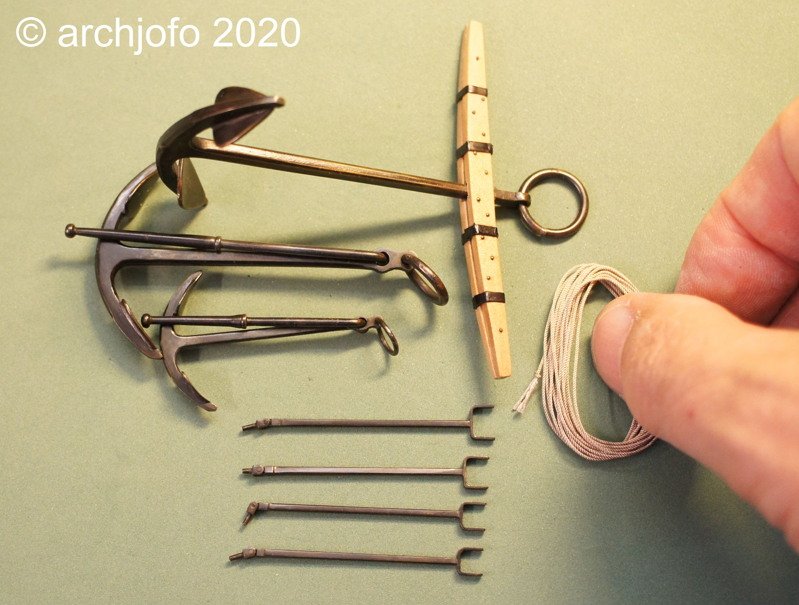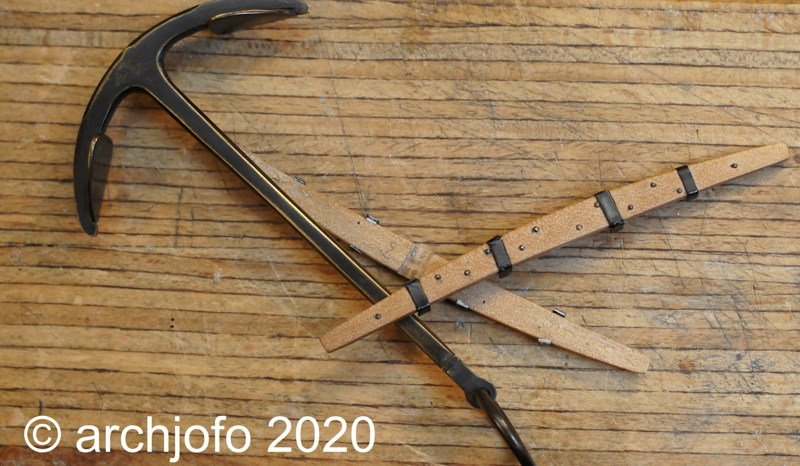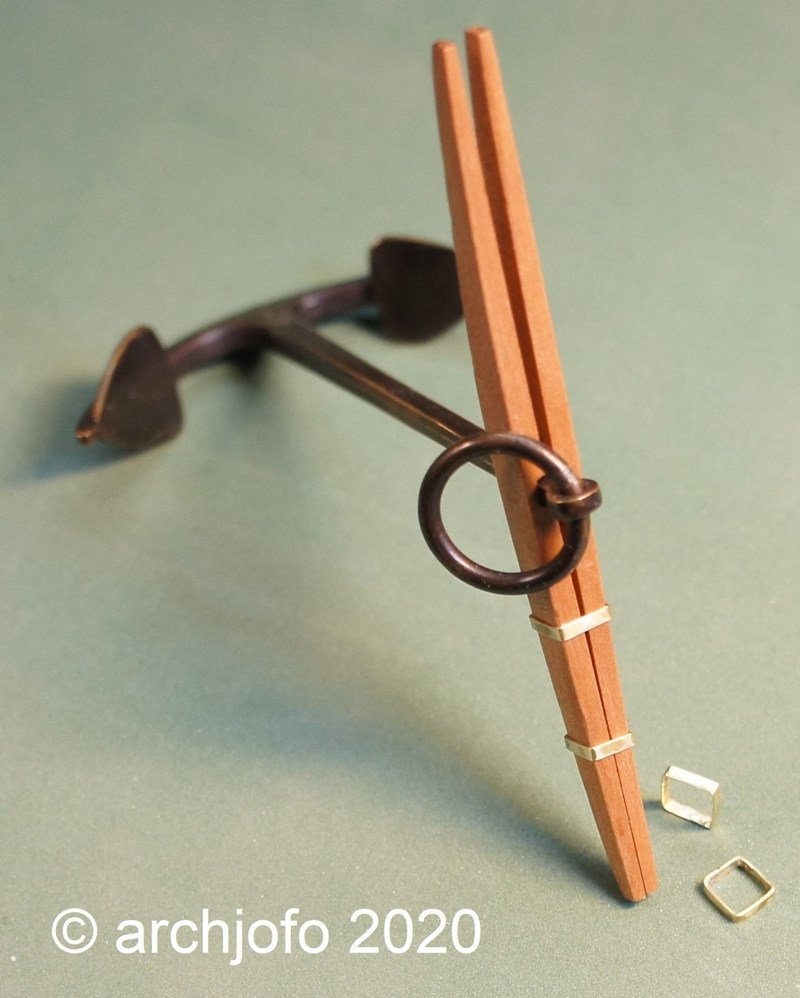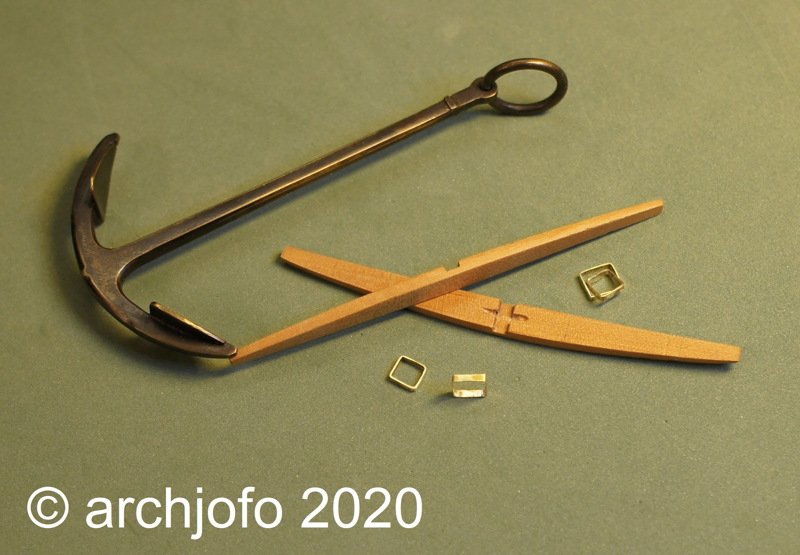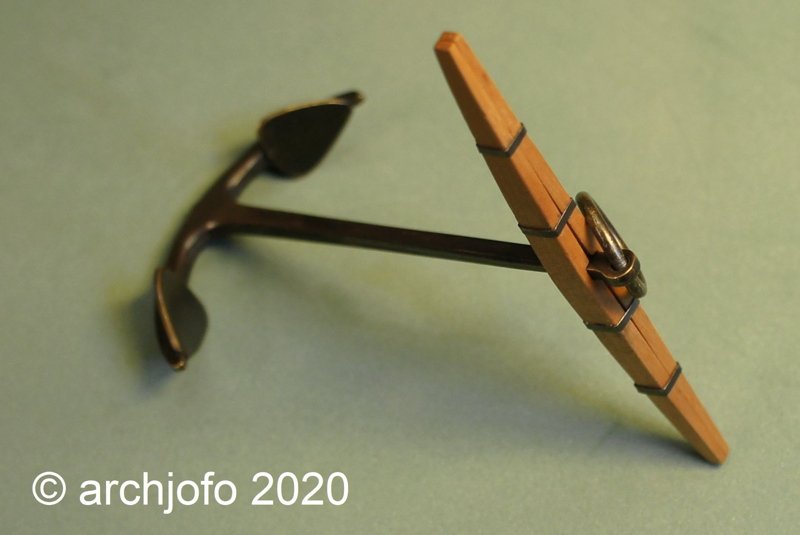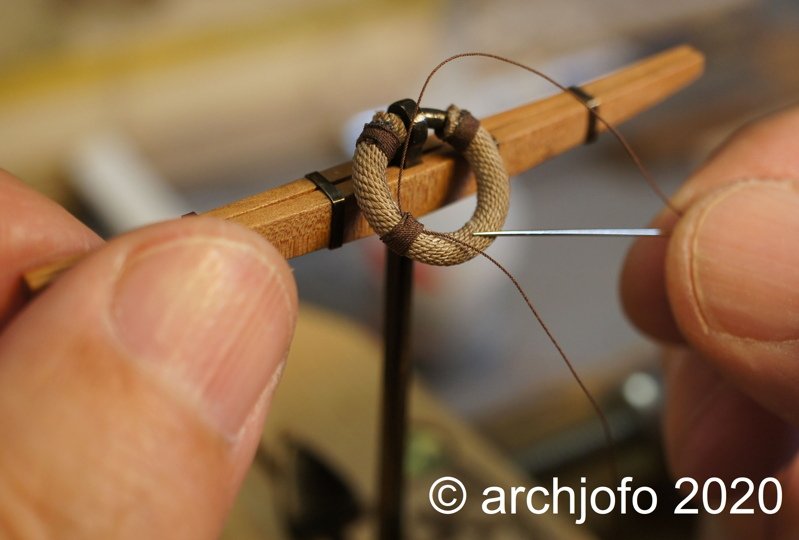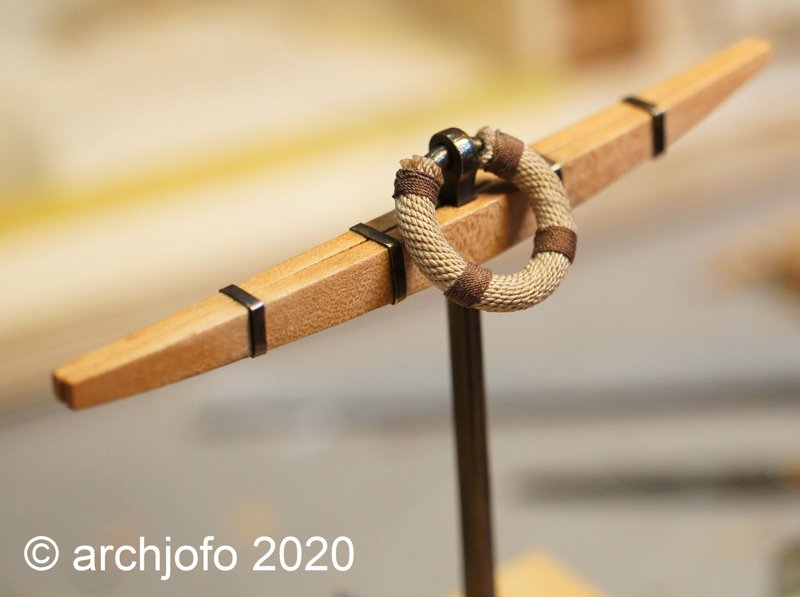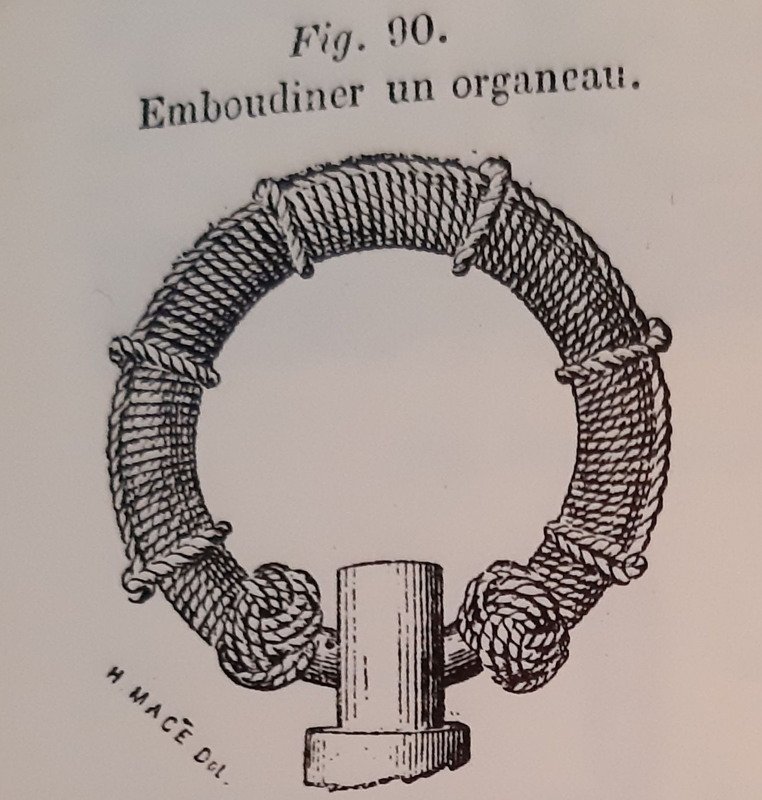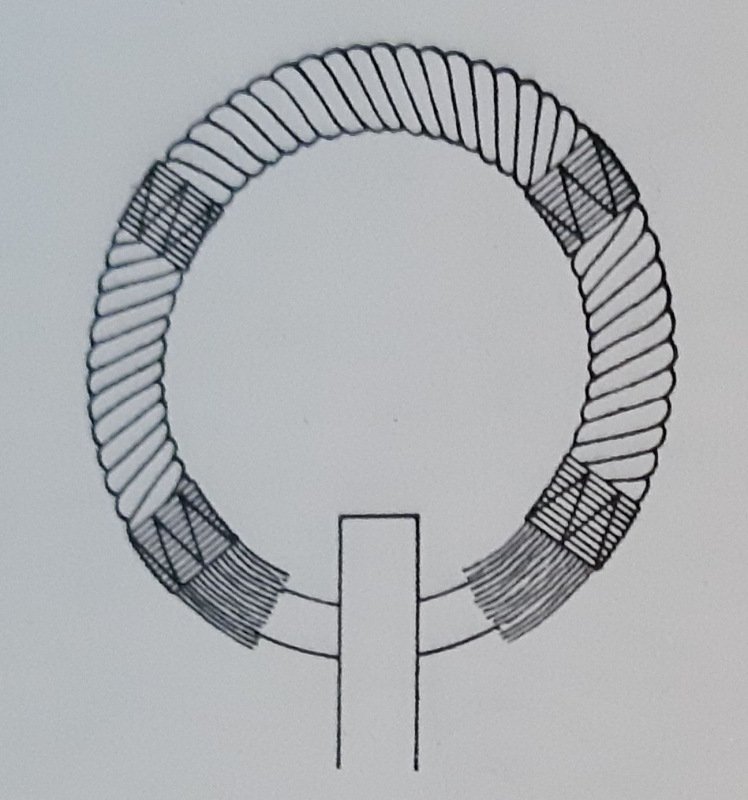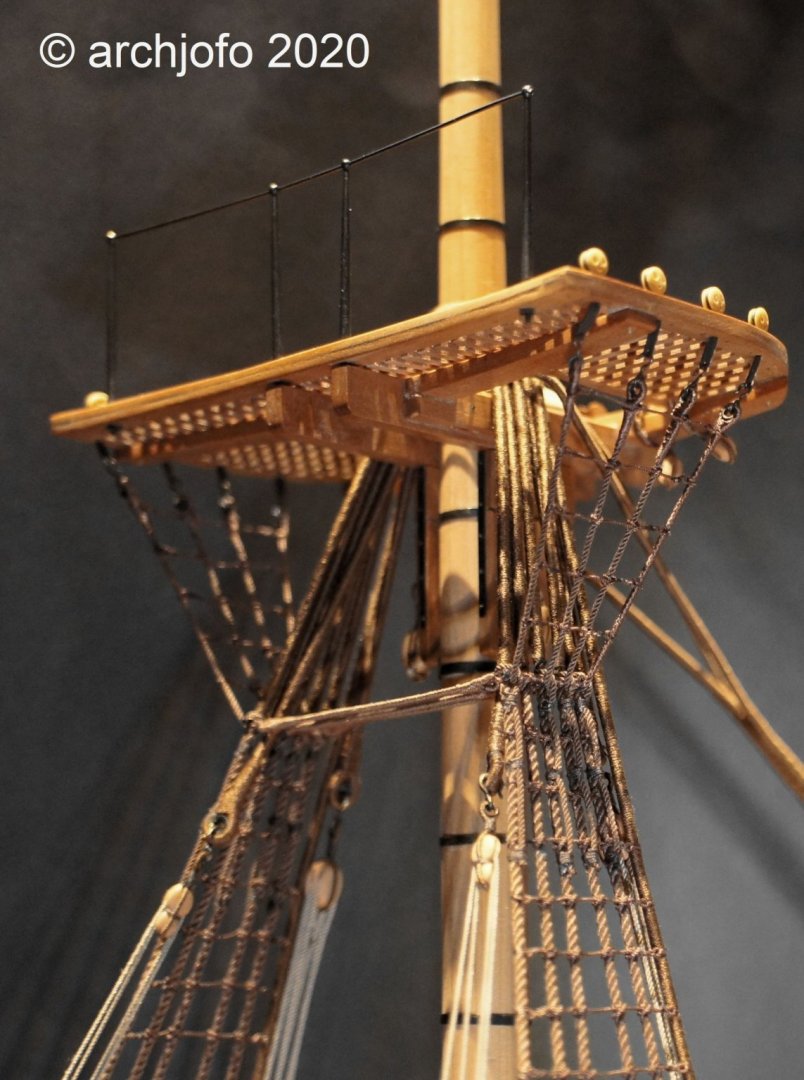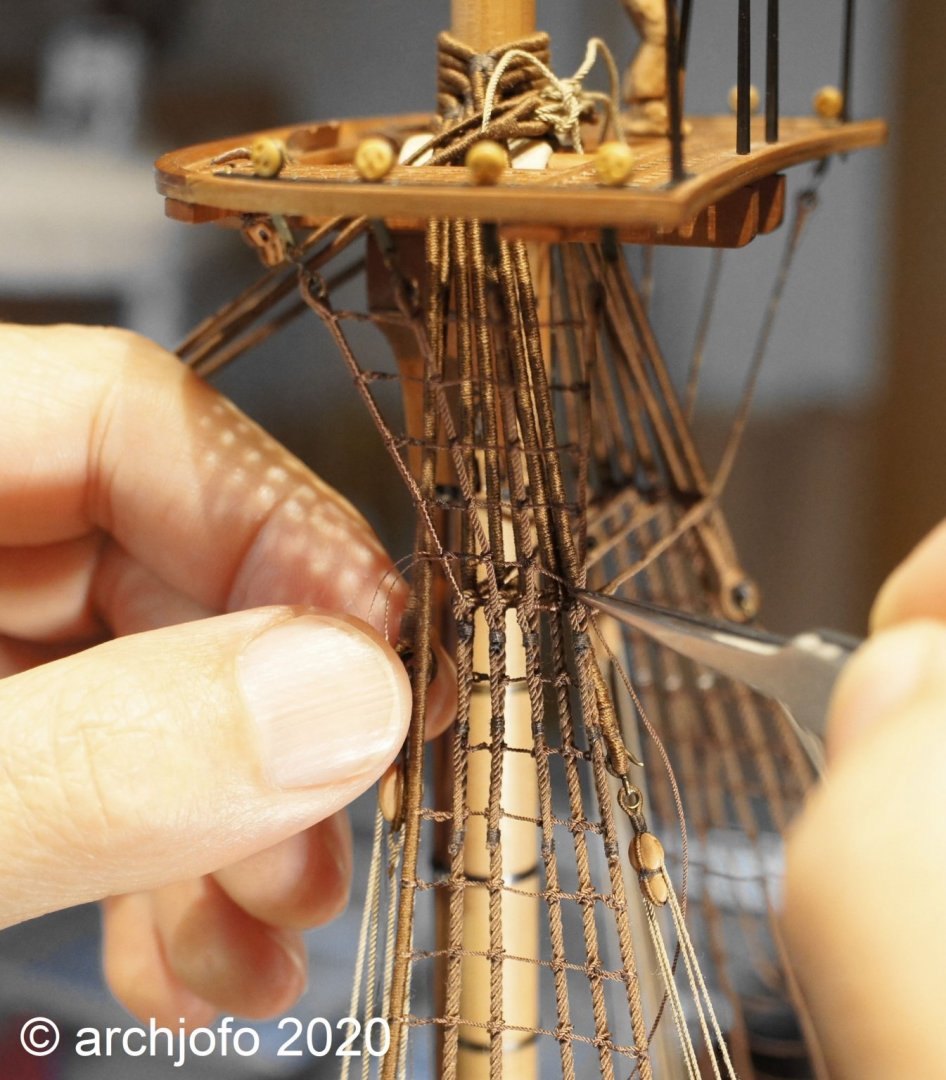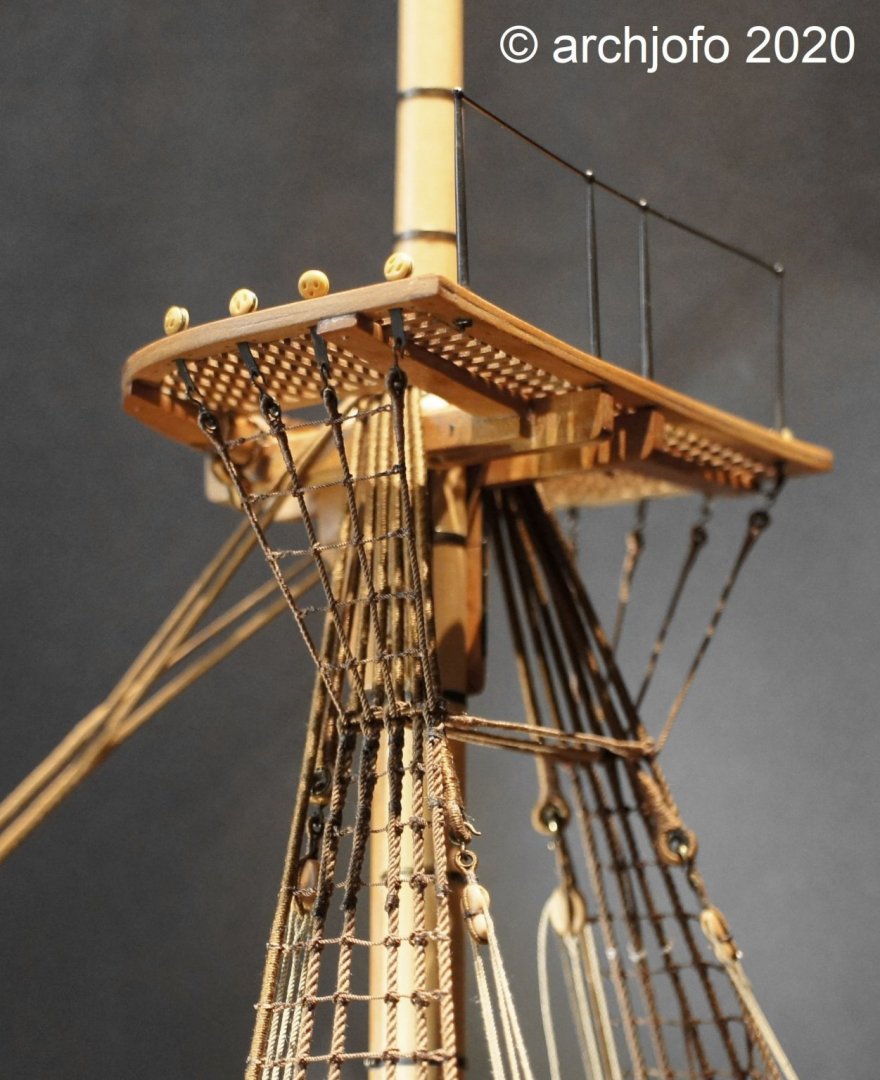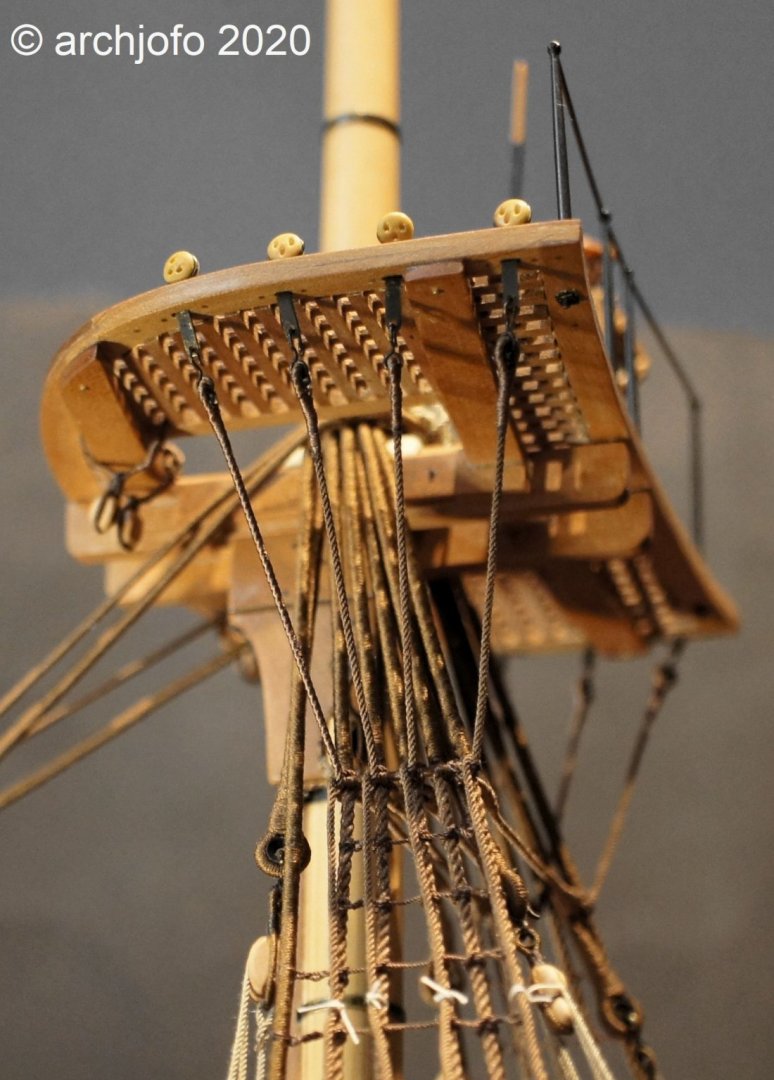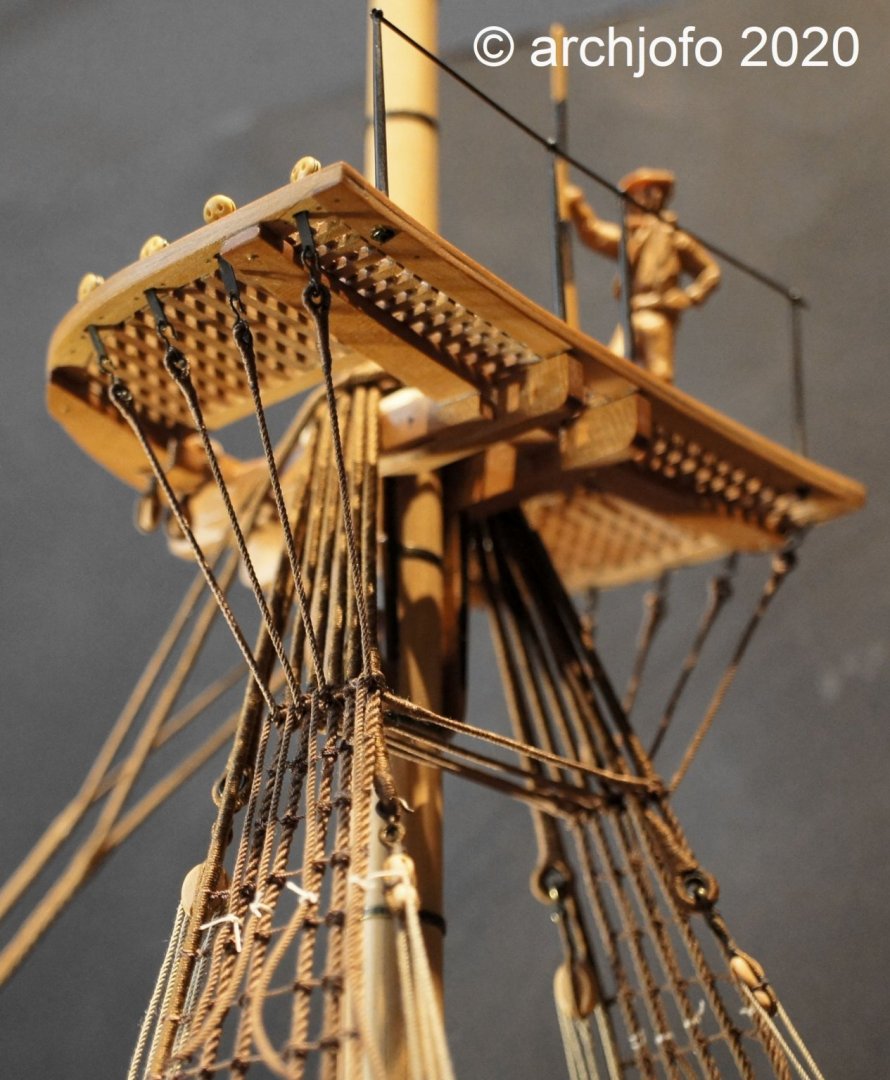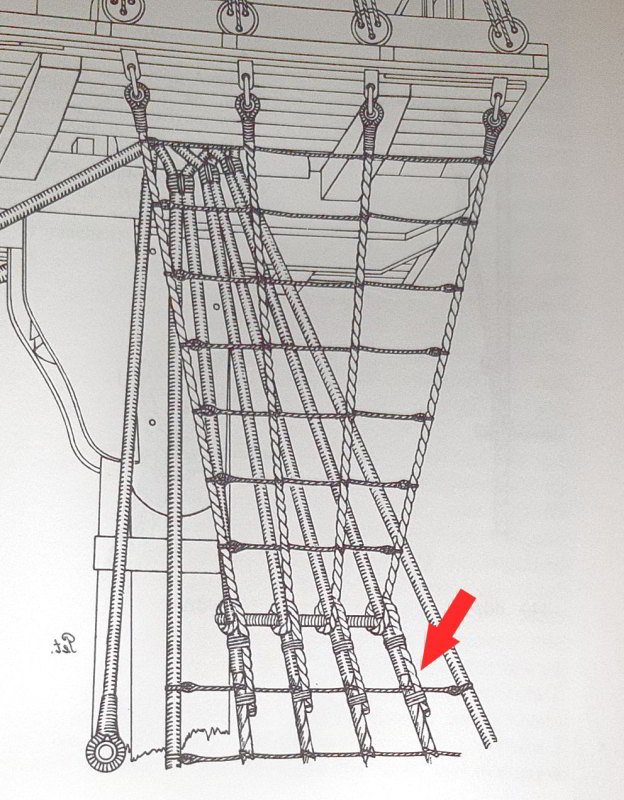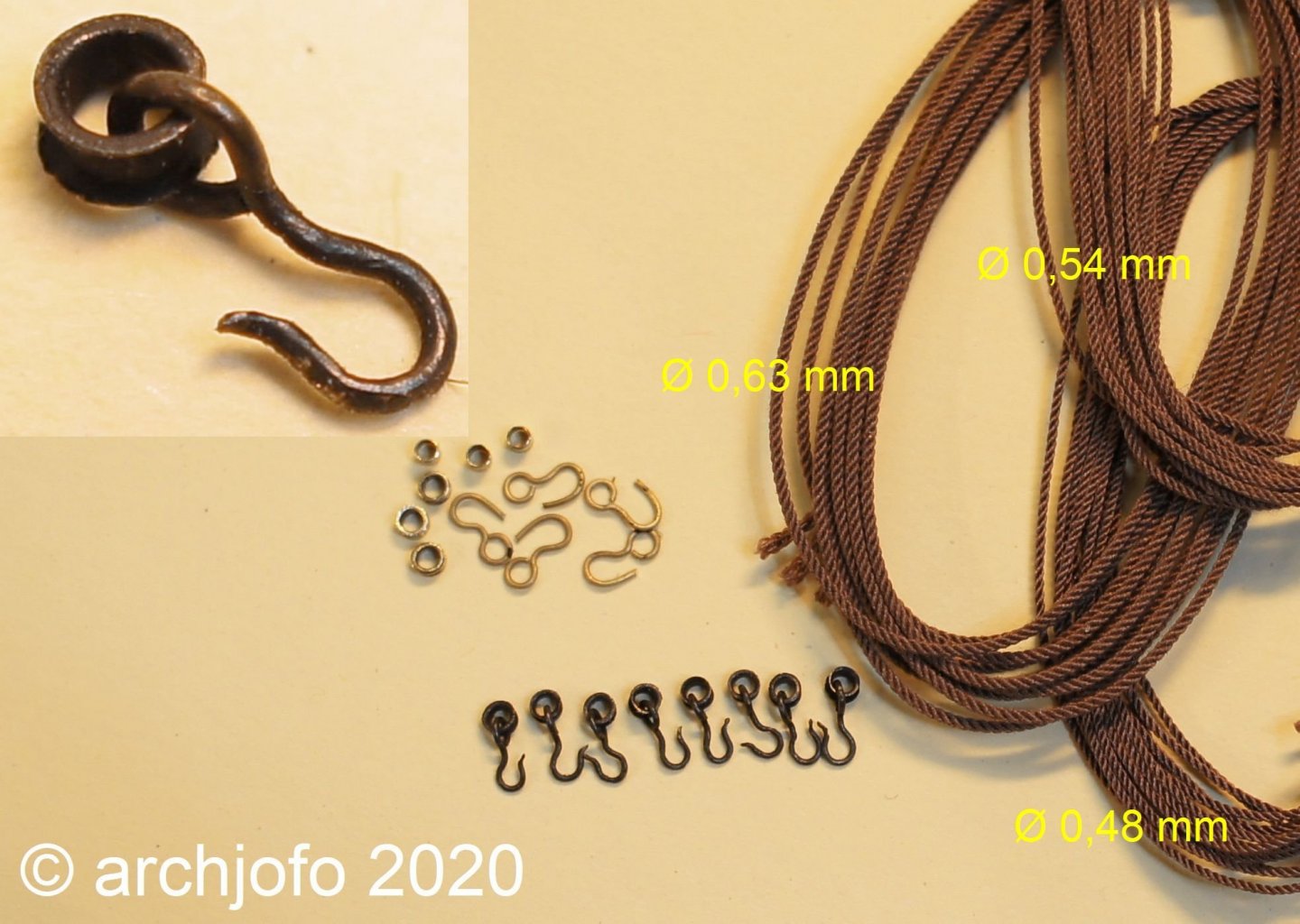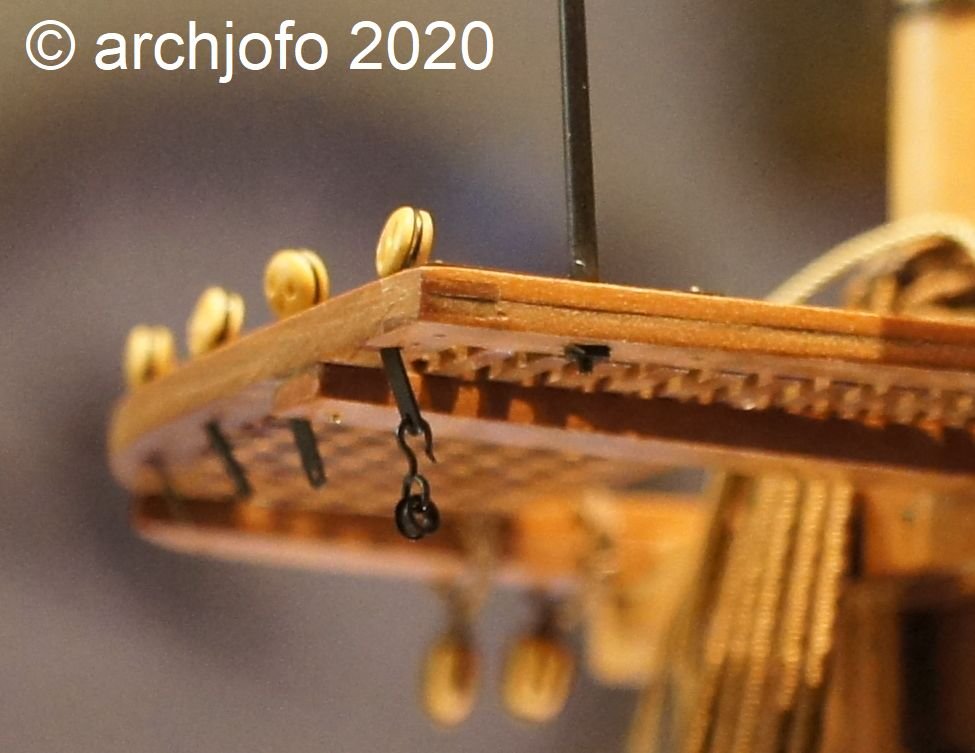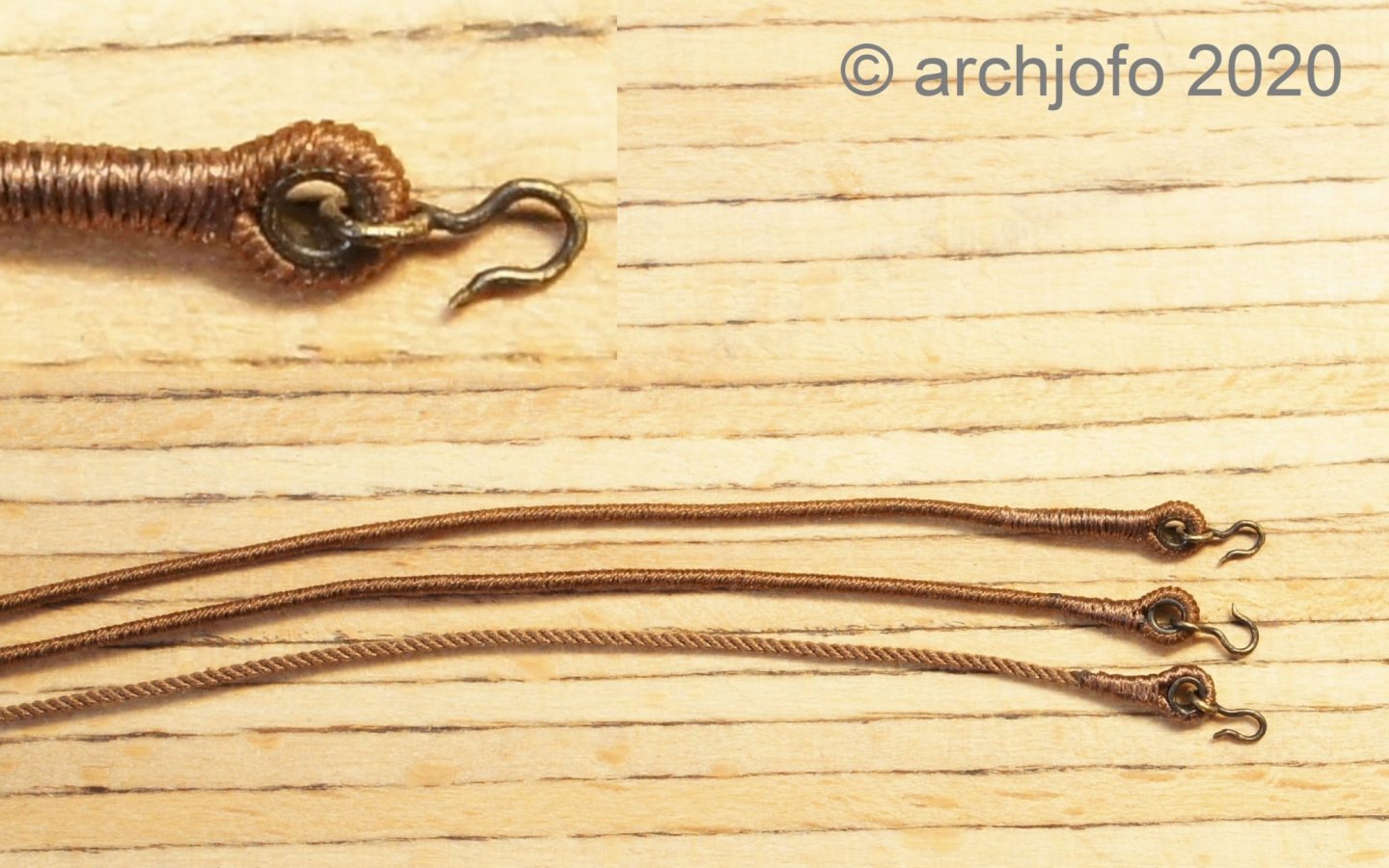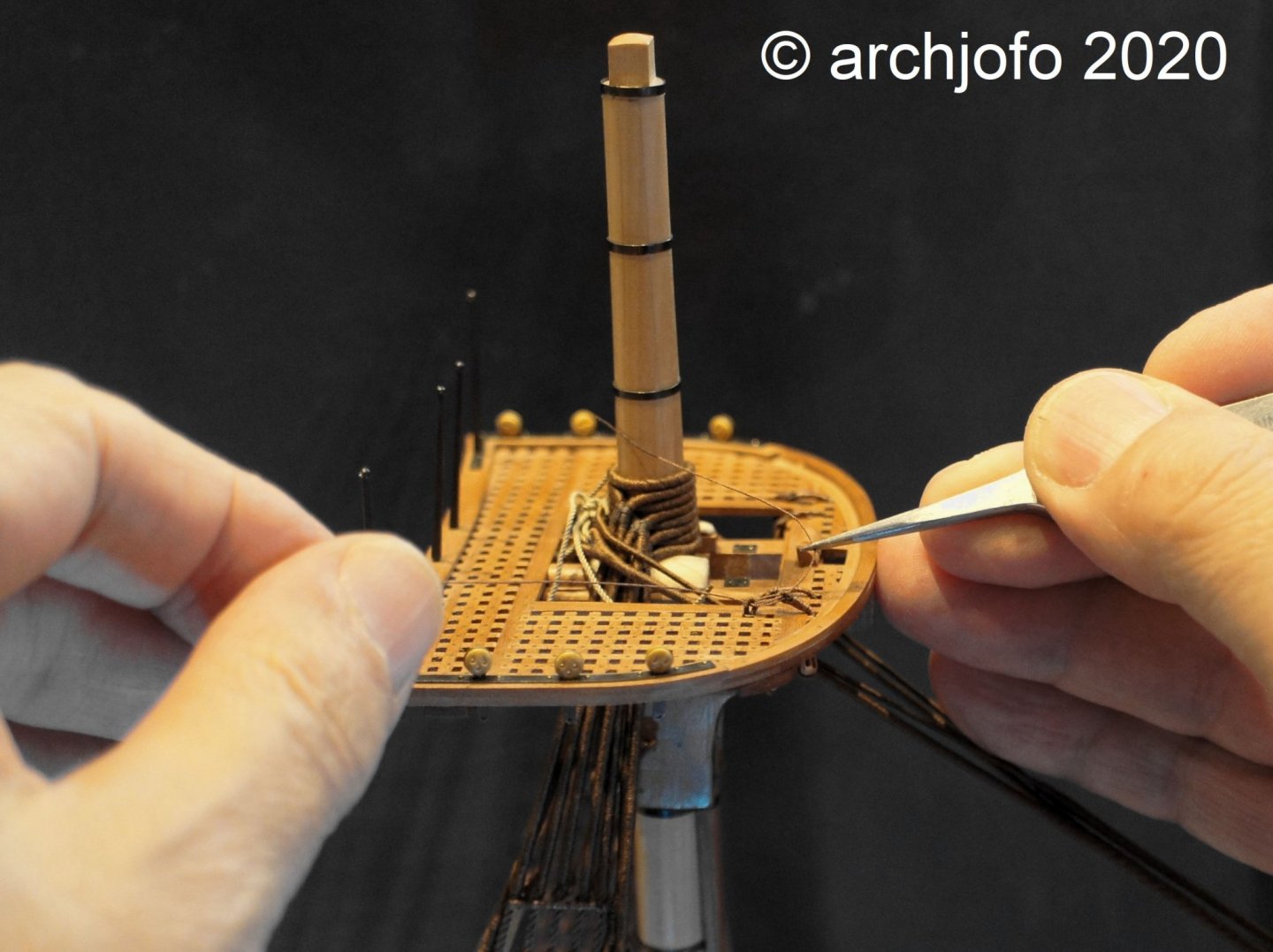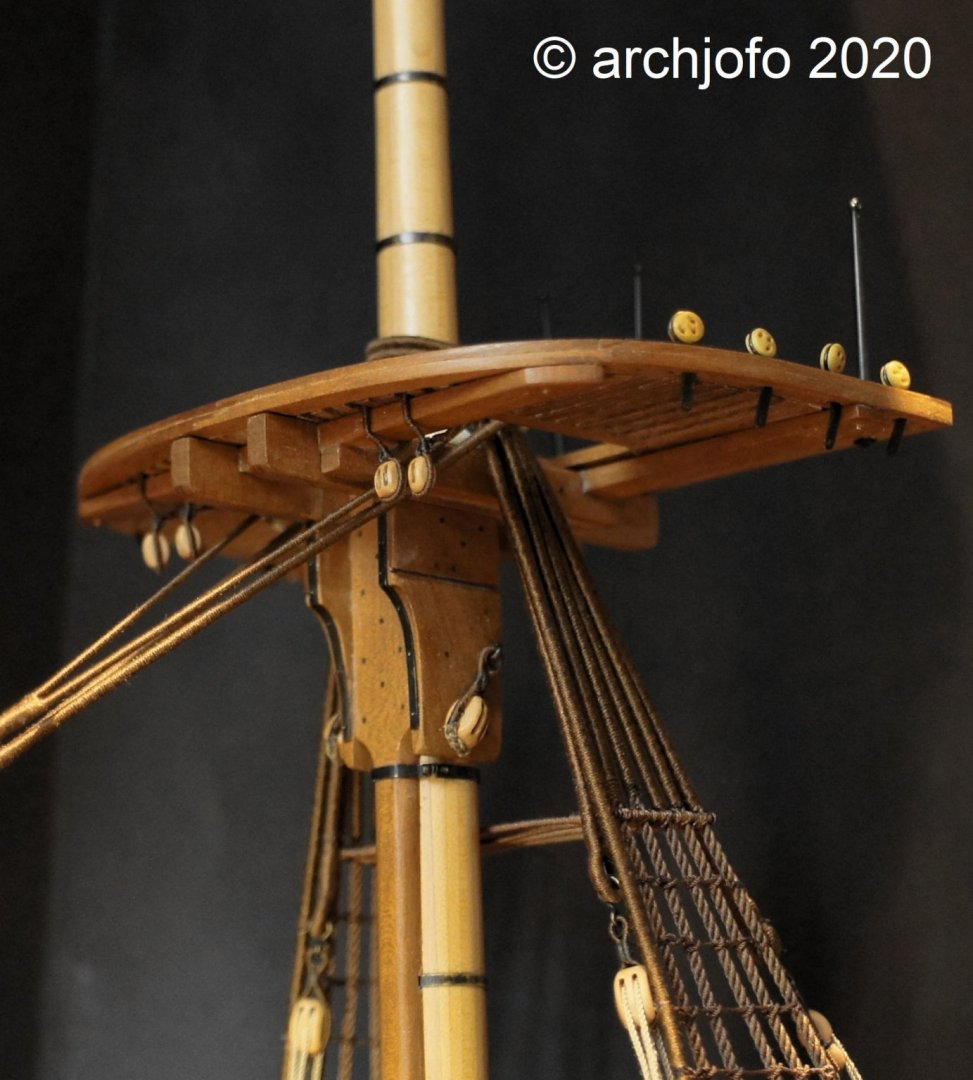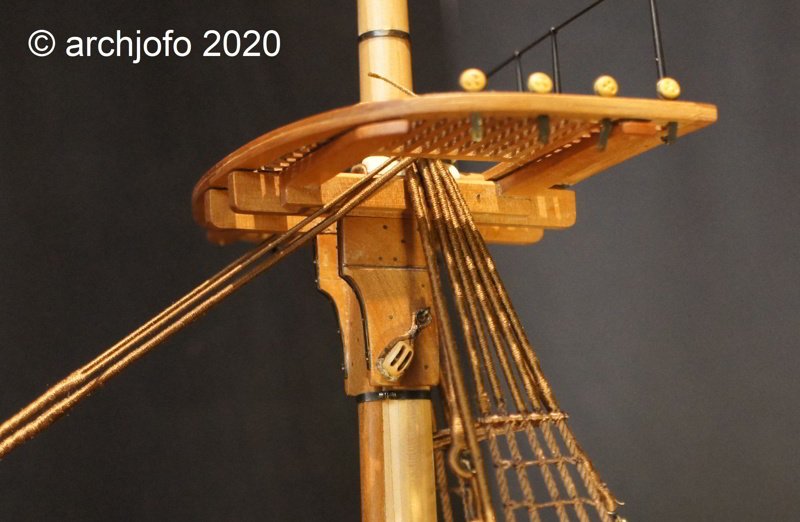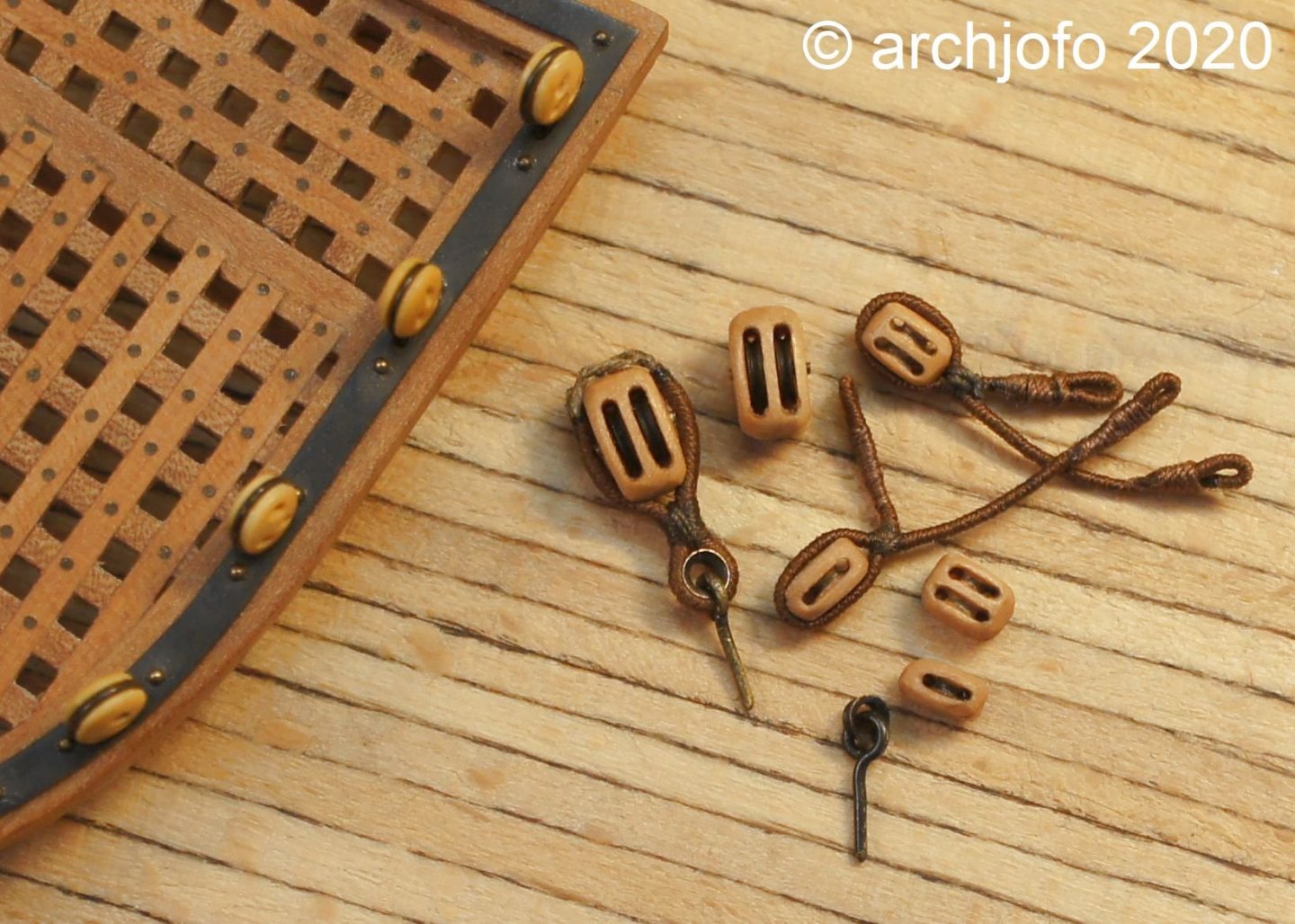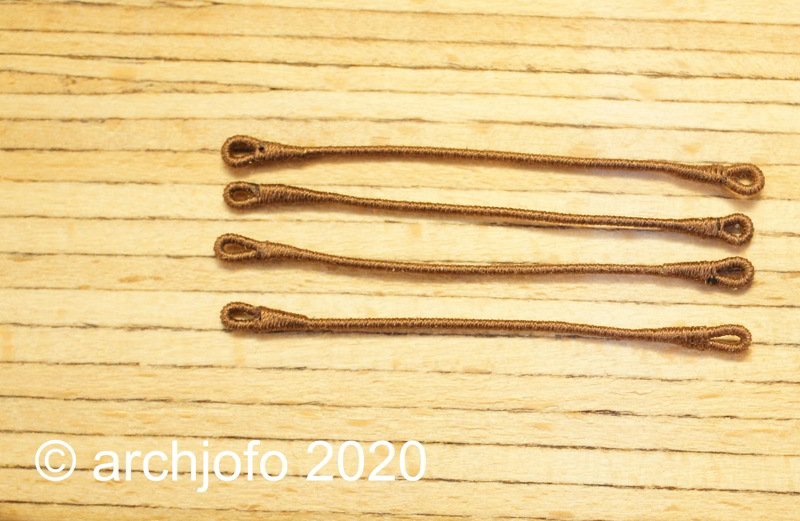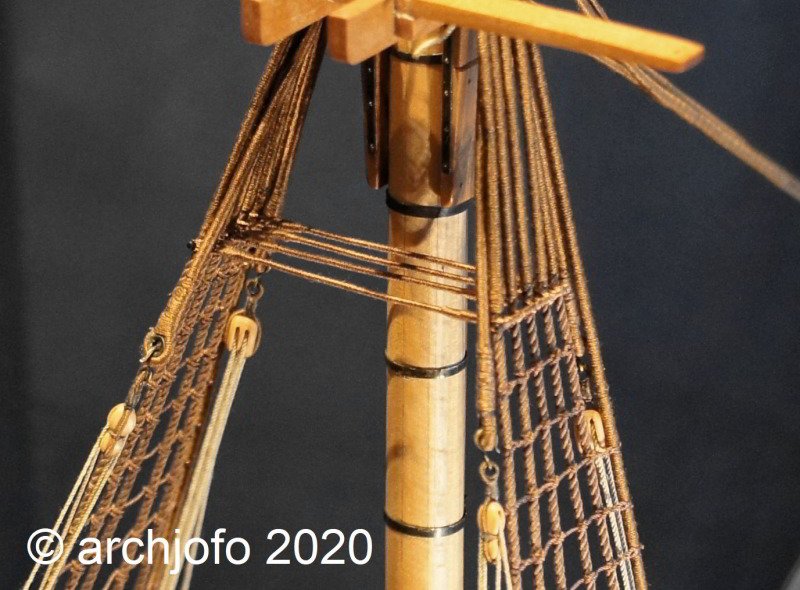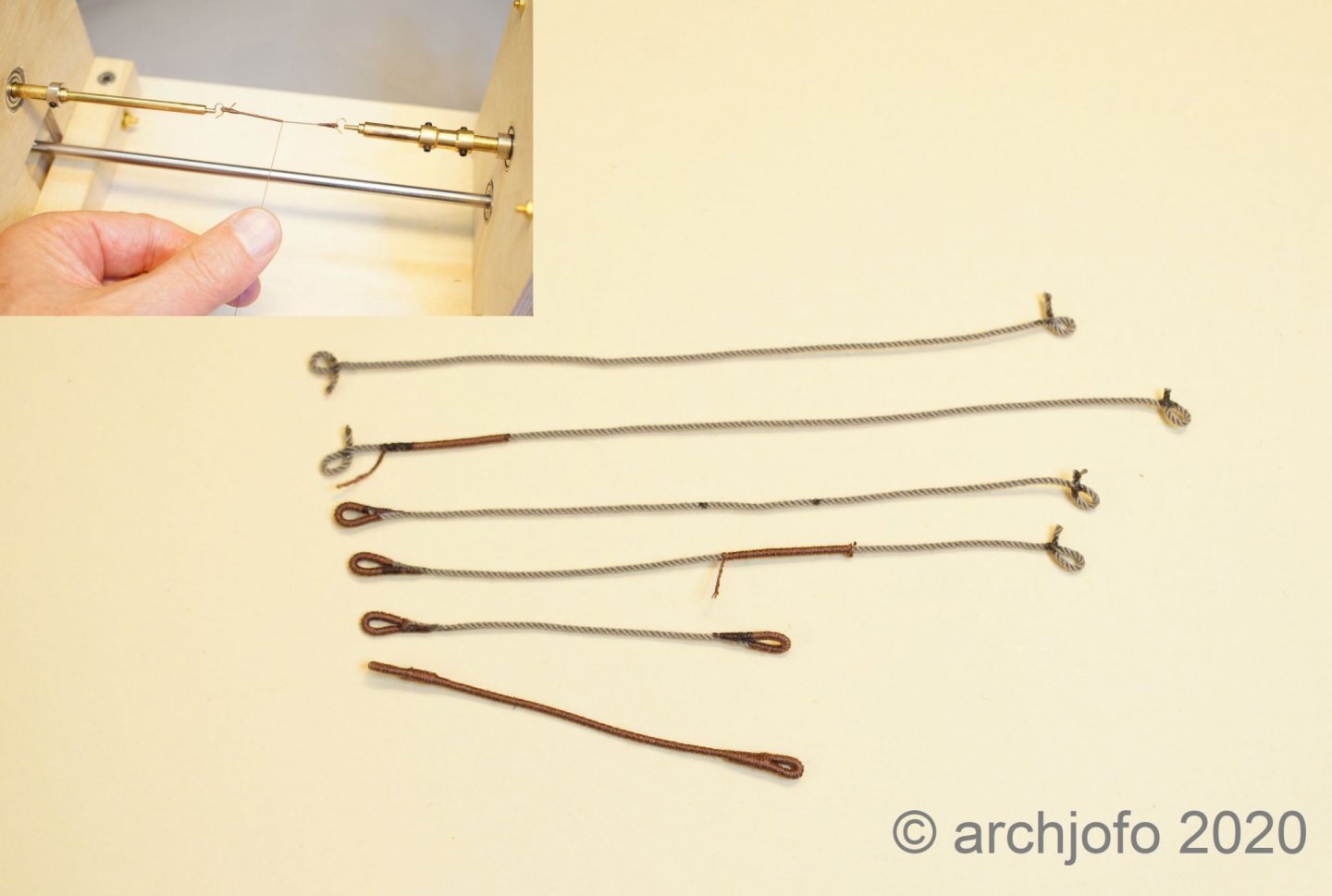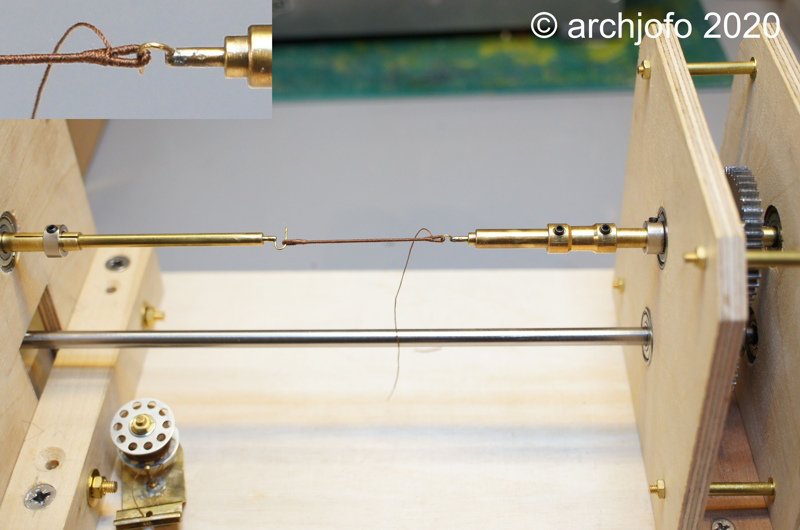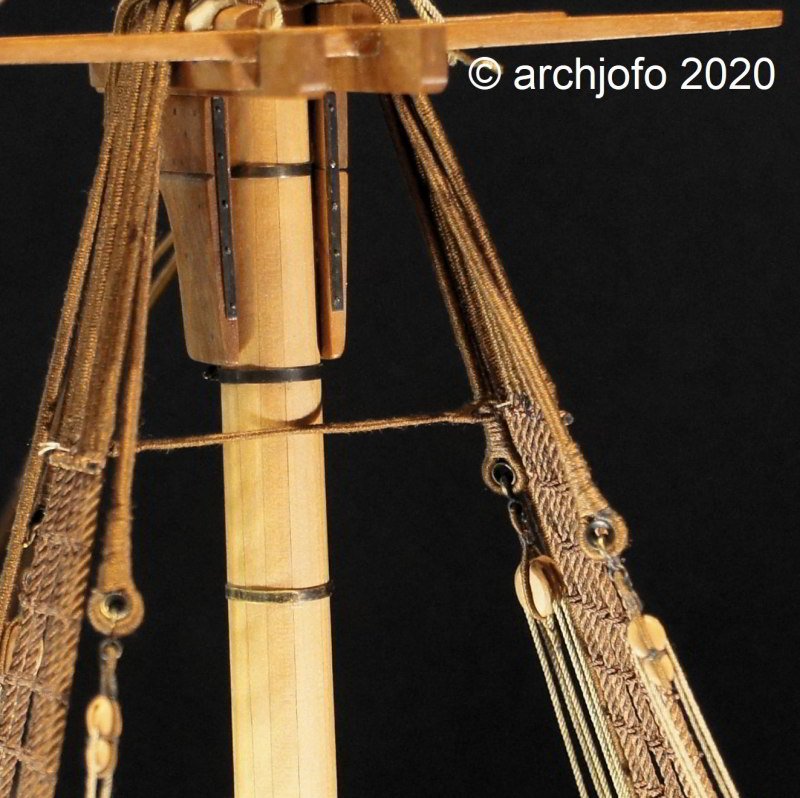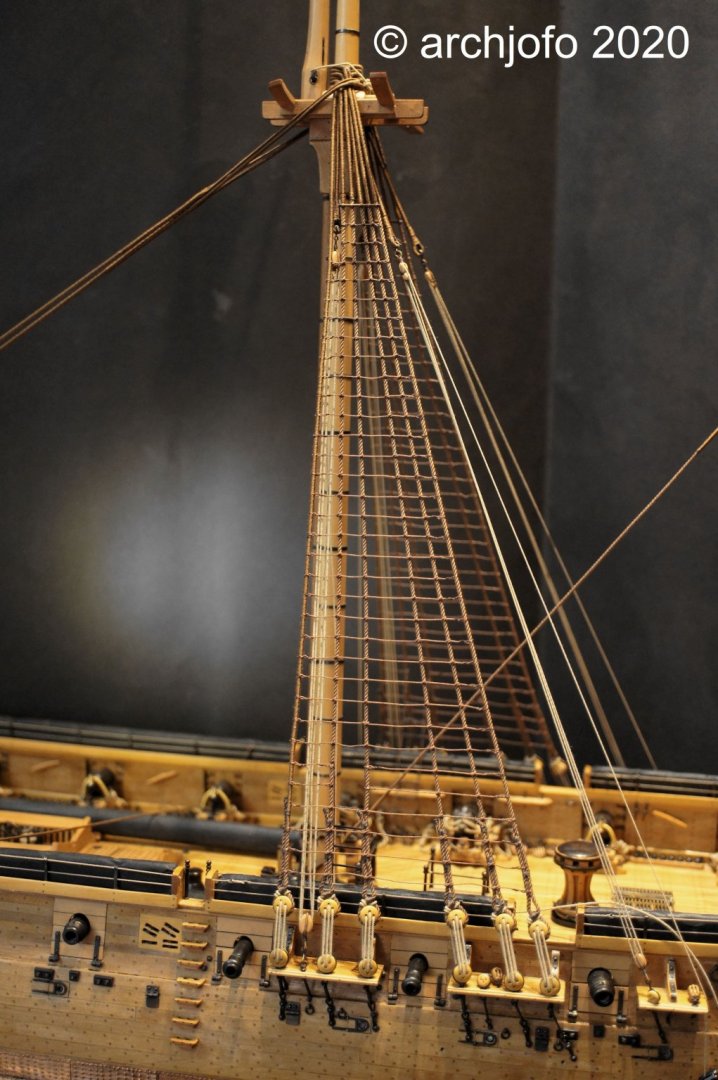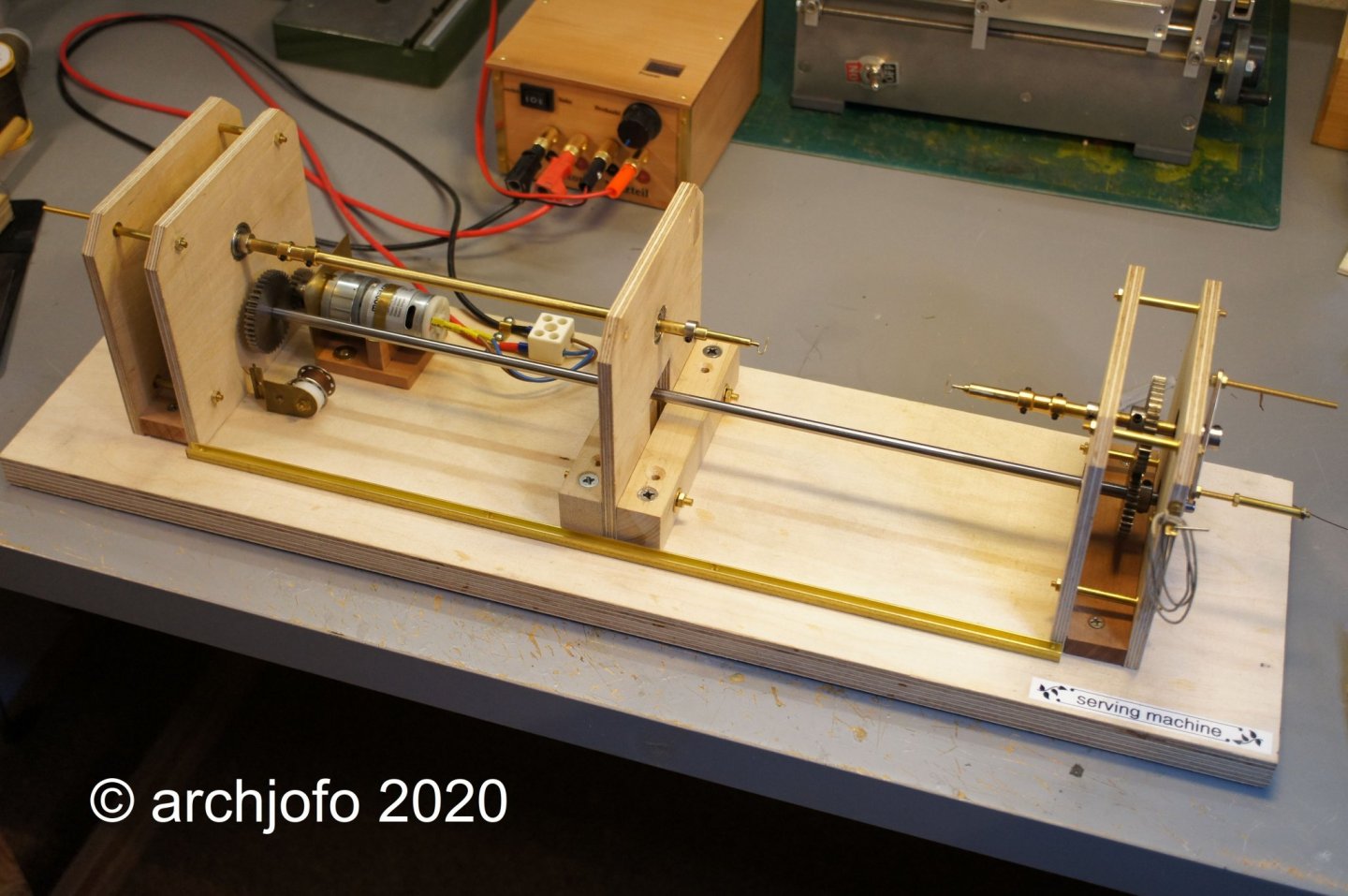-
Posts
1,495 -
Joined
-
Last visited
Content Type
Profiles
Forums
Gallery
Events
Everything posted by archjofo
-
After finishing the futtock shrouds for the main mast I need some motivational work in between. Therefore I prepare the fixing of the anchors, which were stowed away in front of the channels of the main mast. But the wooden anchor stocks made many years ago no longer meet my expectations. Therefore, they have been rebuilt as in the original. The hoops are made of brass sheet 0.3 mm, no longer of black paper. The anchor ring had to be equipped with puddening and seizing. I decided to use the Petrejus version, which can be seen on many contemporary models of the Musee de la Marine. Source: E.W. Petrejus „Das Modell der Brigg Irene“ Source: Manuel Du Gabier, 1866
-
@Bluto 1790 Hello, Jim, the keel aying of the original La Créole was done in 1827. In 1829 she was equipped and put into service in 1830. I hope that the information in J. Boudriot's monograph on La Créole, in conjunction with my research, led to mostly correct details. Thanks for the commendation. @Gahm Hello Thomas, I also want to thank you for your compliment.
-
Hello Gregor, excellent detail work . I am very interested in the rigging work.
- 120 replies
-
- la jacinthe
- schooner
-
(and 2 more)
Tagged with:
-
As can be seen in the Parisian model of La Créole, Petrejus' "The Model of the Brig Irene" shows that the futtock shrouds, coming from above, run upwards around the lower shrouds and downwards again in front of the futtock shrouds. In La Créole, the ends of the futtock shrouds run over three ratlines and are fastened with three tapes. It is also interesting that the ratlines in this area are under the futtock shrouds. Source: E.W. Petrejus "The Model of Brig Irene" p. 192 At first sight one could assume a mistake of the model maker. However, after extensive research I can state for myself that obviously both types of design must have existed here, at least continental. Therefore I orientate myself also with this detail at the Paris model. In connection with the catharpins, the futtock shrouds were placed alternately on both sides and only attached as an aid to make corrections.
-
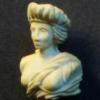
Roter Löwe 1597 by Ondras71
archjofo replied to Ondras71's topic in - Build logs for subjects built 1501 - 1750
Fantastic work ! -
Hi Karl, congratulation for this topmodel!
- 87 replies
-
- royal caroline
- yacht
-
(and 1 more)
Tagged with:
-
Today I came across this building report by chance. Since I myself am very interested in French shipbuilding, I am very pleased to see such a beautifully built hull from the Le Cerf. In the meantime I have also looked at several of your models and admire your skills. Therefore I am sure that the Le Cerf will be a wonderful model.
About us
Modelshipworld - Advancing Ship Modeling through Research
SSL Secured
Your security is important for us so this Website is SSL-Secured
NRG Mailing Address
Nautical Research Guild
237 South Lincoln Street
Westmont IL, 60559-1917
Model Ship World ® and the MSW logo are Registered Trademarks, and belong to the Nautical Research Guild (United States Patent and Trademark Office: No. 6,929,264 & No. 6,929,274, registered Dec. 20, 2022)
Helpful Links
About the NRG
If you enjoy building ship models that are historically accurate as well as beautiful, then The Nautical Research Guild (NRG) is just right for you.
The Guild is a non-profit educational organization whose mission is to “Advance Ship Modeling Through Research”. We provide support to our members in their efforts to raise the quality of their model ships.
The Nautical Research Guild has published our world-renowned quarterly magazine, The Nautical Research Journal, since 1955. The pages of the Journal are full of articles by accomplished ship modelers who show you how they create those exquisite details on their models, and by maritime historians who show you the correct details to build. The Journal is available in both print and digital editions. Go to the NRG web site (www.thenrg.org) to download a complimentary digital copy of the Journal. The NRG also publishes plan sets, books and compilations of back issues of the Journal and the former Ships in Scale and Model Ship Builder magazines.


